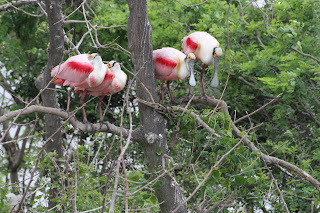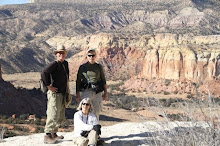 100 Nights in Africa 2011:
100 Nights in Africa 2011: Budget Travel Tip # 2:
Stay in locations where wildlife is easy to see in daily life.
Most trips in Africa are expensive, short, but very memorable. We decided years ago that we could not afford to go on standard safaris where all costs were managed by a company.
We learned to seek out camps where wildlife was around and so that we did not need to go on expensive game drives so often. Game drives guided by competent guides are indeed the best way to go. They can find animals when we could not, and they are a wealth of information on behavior of the animals.
Mfuwe, Zambia near South Luangwa National Park
An example of a place to stay where wildlife is around during the day and night is our personal favorite,
Flatdogs Camp in Mfuwe, Zambia. There are also other camps along the river as you approach the national park, and the wildlife is very varied and often easy to observe.
Some days are better than others, of course. Yesterday was a
Banner Day for Wildlife viewing
We are traveling for three months and trying to stay in a budget of $100 a day including the cost of the airfare to get to Africa so we cannot go on safari every day we are here nor can we eat in the restaurant so we do our own wildlife viewing as we move about the camp.
Early morning on the bluff-.......................................... We are usually set up on the hippo trail overlooking the river and the area where the water has receded by 6:00 a.m., coffee in hand with our chairs and spotting scope and camera. We spend about an hour or so and then go fix breakfast.
This is not a complete list but a great deal of what we have seen while there:
wattled plover Egyptian geese gymogene sacred ibis
tawny eagle ground hornbill crowned crane pied wagtail
guinea fowl white faced duck crowned hornbill heron
pied kingfisher African spoonbill yellowbilled stork egret
saddlebilled stork bee-eater colony and others I cannot recall at this time
We have also seen elephant, giraffe, buffalo, and baboons in the park across the river.
The banner day..........................................................
One morning we got up and had a nice bird day out on the bluff. Scanning the far shore to see it anything appeared, into the view came six buffalo on the opposite shore. Watched them for awhile and then went to fix breakfast.
Could hear trumpeting near reception, went to look and saw one heading off away from the camp. As we went over to the self-catering kitchen, could see the trees moving and here come the elephants, seven of them, passing behind the kitchen! After breakfast, we walked over to check out the lagoon and there were two of the elephants in the lagoon area.
When we went to fix lunch, the monkeys were playing all about and one got into the hut next to the kitchen and managed to turn on the shower. Robert went to tell reception and when he walked over there, giraffes were out in front of reception.
Time for the afternoon walk.........................
We started our walk and went to check out the lagoon. There was a single buffalo in the edge of the lagoon. When we walked up, the buffalo heard us and looked up. What to do? Just watched him but were aware everyone says they are unpredictable. We could see a giraffe in the game area behind him.
As we continued on walking on the hippo trail by the river saw three elephants on the other side. Watched them for awhile and continued on. They stayed visible for a great deal of the rest of the afternoon.
As we rounded the chalets, went out to the hippo trail again and there were 3 giraffe eating away. Right before we had walked out there we encountered a snake, our second one for this trip. It was identified to us as a stripe bellied sand snake. (non poisonous)
We also observed a saddlebill stork being chased by some other bird. The stork must have been trying to get into the other birds nest.






















































